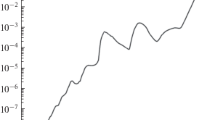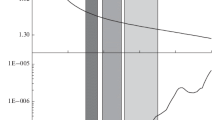Abstract
THE extinction of visible radiation in a diffusing and absorbing substance such as ice or water is composed of absorption and scattering. An approximation connects the absorption, scattering and extinction coefficients (respectively given by ϰ, r and μ) by the relation  Equation (1) can only be true for single scattering, in which process singly scattered light is effectively scattered out of the field of interest so that the effect is cumulative with absorption processes in contributing to the overall extinction. For media involving multiple scattering, light scattered out of the direction of interest can equally be returned to this field by subsequent scatterings. This implies that in general the extinction coefficient is restricted by the relation
Equation (1) can only be true for single scattering, in which process singly scattered light is effectively scattered out of the field of interest so that the effect is cumulative with absorption processes in contributing to the overall extinction. For media involving multiple scattering, light scattered out of the direction of interest can equally be returned to this field by subsequent scatterings. This implies that in general the extinction coefficient is restricted by the relation 
Similar content being viewed by others
References
Dunkle, R. V., and Gier, J. T., Calif. Univ. Inst. of Eng. Res. Cont. DA-11-190-Eng-3 (1953).
Weller, G., and Schwerdtfeger, P., Polar Met. WMO Tech. Note 87 (1967).
Weller, G. E., Nature, 221, 355 (1969).
Author information
Authors and Affiliations
Rights and permissions
About this article
Cite this article
SCHWERDTFEGER, P. Absorption, Scattering and Extinction of Light in Ice and Snow. Nature 222, 378–379 (1969). https://doi.org/10.1038/222378a0
Received:
Issue Date:
DOI: https://doi.org/10.1038/222378a0
- Springer Nature Limited





